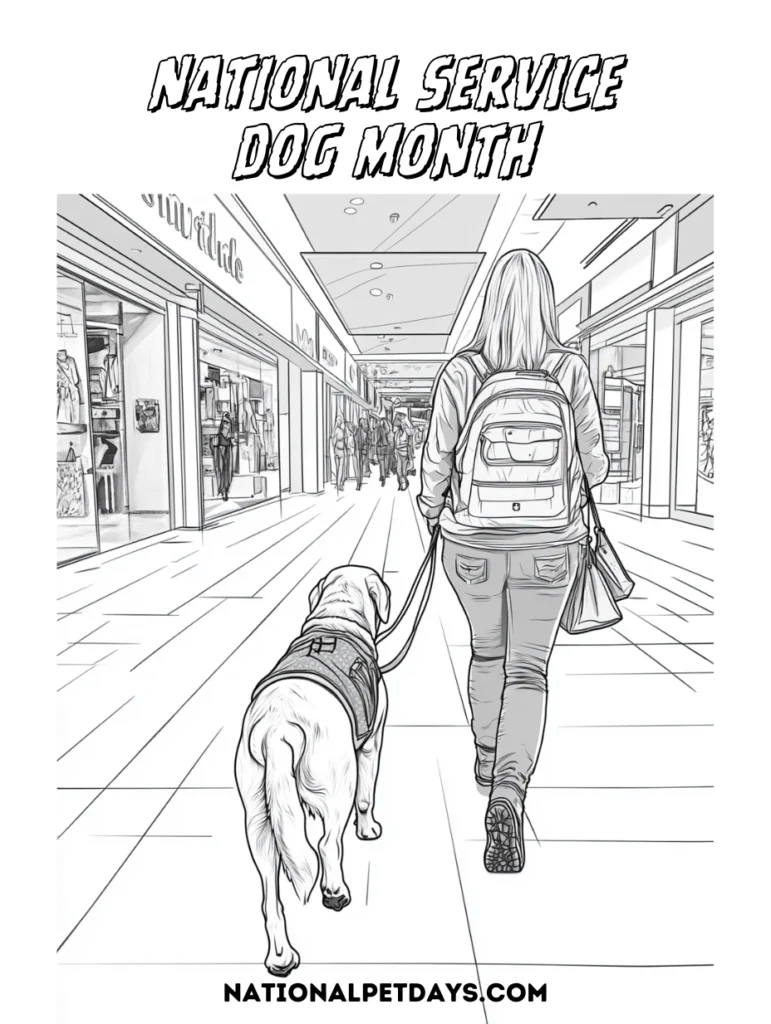September is National Service Dog Month, a time to honor and recognize the incredible contributions of service dogs to individuals with disabilities. These specially trained dogs provide essential support, enhancing the independence and quality of life for those they assist. Whether guiding the visually impaired, alerting the hearing impaired, or helping with mobility tasks, service dogs are true heroes who deserve our appreciation and respect. This month, we celebrate their dedication, the rigorous training they undergo, and the profound bond they share with their handlers.
National Service Dog Month was created by actor Dick Van Patten in 2008, launching the pet holiday as a fundraiser that has since become an annual celebration of these special dogs.

10 Things You May Not Know About Service Dogs
Service dogs are incredible animals, but there’s more to them than meets the eye. Here are 10 fascinating facts you might not know about these hardworking companions:
- Diverse Breeds: Service dogs come in all shapes and sizes, with various breeds trained to assist depending on the task.
- Multiple Roles: While they’re often associated with guiding the visually impaired, service dogs also support individuals with PTSD, epilepsy, diabetes, and mobility issues.
- Rigorous Training: Training a service dog can take up to two years, with specific tasks tailored to their handler’s needs.
- Public Access Rights: Service dogs have the legal right to accompany their handlers in public places, including restaurants, stores, and airplanes.
- No Uniform Needed: Contrary to popular belief, service dogs aren’t required to wear vests or specific identifiers, though many do for easier recognition.
- Emotional Support Animals Are Different: Unlike service dogs, emotional support animals (ESAs) don’t receive specialized training and therefore don’t have the same public access rights.
- Medical Alert Dogs: Some service dogs are trained to detect changes in their handler’s body, such as blood sugar levels, and alert them to take action.
- Legal Protections: In the U.S., the Americans with Disabilities Act (ADA) protects the rights of individuals with service dogs, ensuring they can’t be discriminated against in housing or public access.
- Psychiatric Service Dogs: These dogs assist individuals with psychiatric conditions by performing tasks like interrupting anxiety attacks or providing deep pressure therapy.
- Lifelong Bond: The relationship between a service dog and their handler is profound, built on trust and constant companionship.
Service dogs are more than just pets; they are essential partners in helping individuals navigate life’s challenges.
FAQ
What’s an owner-trained service dog?
An owner-trained service dog is a dog that has been trained by its owner to perform specific tasks that assist with the owner’s disability. Unlike service dogs that come from professional training programs (sometimes called program dogs), these dogs are taught by their owners, often with the help of professional trainers or training resources.
The dog must meet the same standards of behavior and task performance as professionally trained service dogs to ensure they can perform reliably in public settings and assist their handler effectively.
How do service dogs get certified in the United States?
In the United States, service dogs are not required to be certified by any official agency or organization. While some professional training programs may offer certifications to demonstrate a dog’s training and abilities, the Americans with Disabilities Act (ADA) does not mandate any specific certification.
Instead, the focus is on the dog’s ability to perform specific tasks related to the handler’s disability and its behavior in public settings. Handlers are not required to provide proof of certification or documentation for their service dogs.
What’s a Public Access Test?
A Public Access Test (PAT) is a set of evaluations designed to assess whether a service dog is well-behaved and able to function effectively in public settings.
The test typically measures the dog’s ability to remain calm and controlled in various situations, follow basic commands, and avoid distractions. The dog must demonstrate that it can perform tasks reliably for its handler without causing disruptions or posing a risk to others.
Although not required by law, some handlers use the PAT to ensure their dog meets public access standards.
